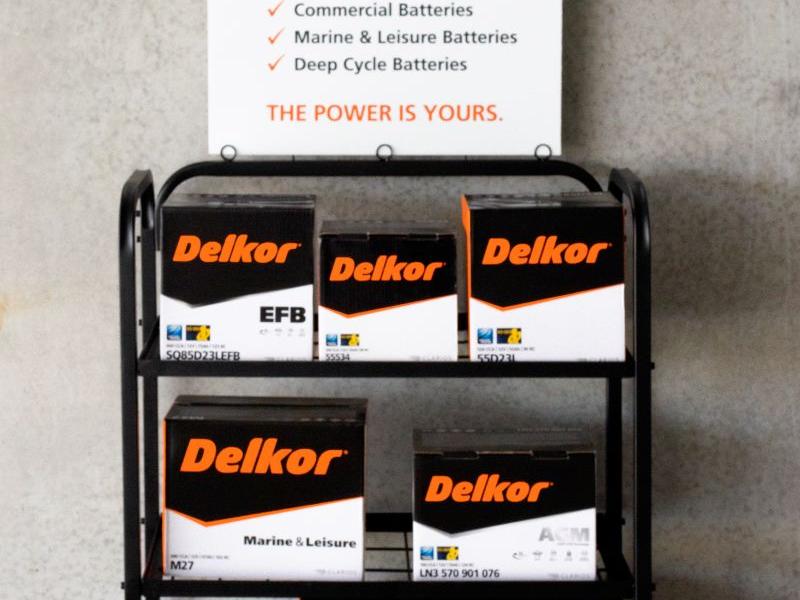The complex nature of the automotive industry is known to all. The aftermarket industry is just as complicate, leaving customers overwhelmed by the sheer number of options available. When it comes to the battery category alone, there are many types to choose from depending on power requirements, application, budget and lifestyle needs. The three types of automotive batteries predominately used today are Calcium (Maintenance Free), EFB (Enhanced Flooded Battery) and AGM (Absorbent Glass Mat) batteries. The notable differences between each type of battery are best explained using the battery hierarchy.
Calcium batteries are positioned at the base of the hierarchy. These are the most commonly used batteries among the three battery types. Calcium batteries are lead acid batteries which have small amounts of calcium added to both the positive and negative grids to improve durability and reduce water consumption. Calcium batteries are also maintenance free because the water in the electrolyte does not evaporate and therefore they do not require topping up with water. Despite these advantages, Calcium batteries require charging if not used regularly to prevent sulphation, which will reduce the service life of a battery.
In the middle of the battery hierarchy are the EFBs. These are relatively new to the market as they were developed specifically to cater to modern Idle Stop Start (ISS) vehicle requirements. They are based on the calcium battery design which means that they can be manufactured in a calcium battery factory using the existing equipment. Enhancements to the base design results in increased charge acceptance and cranking power, as well as the ability to constantly operate at partial State of Charge. Although EFBs are a step up from calcium batteries, they are considered an entry level option for vehicles that use ISS technology.
AGM batteries are the premium choice for high end and advanced ISS vehicles with recuperative braking. AGM batteries use a compressible glass mat to separate the positive and negative plates in the battery. This mat also holds the electrolyte required for the battery to function. During assembly, the plate and mat assembly is compressed which enhances durability and vibration resistance. These factors mean that an AGM battery will last longer than a Calcium or EFB in the same application. AGM batteries are able to effortlessly cope with the high demands placed on the various accessories and technologies included in modern vehicles. Despite these benefits, one of the biggest disadvantages of AGM batteries is that they are more expensive than Calcium batteries and EFBs.
When it comes to upgrading, there are a few things to note. While it is possible for many fitments to upgrade to a higher construction type, it not recommended to downgrade. For example, a vehicle originally fitted with a Calcium battery can often be upgraded to an EFB or even an AGM battery provided that the case size is correct. If a vehicle originally fitted with an EFB battery was downgraded to a Calcium battery, the battery will succumb to premature failure. The installation location also matters as it is important to consider how hot the battery will get. Flooded batteries shed heat more efficiently than AGM batteries as the electrolyte can transfer the heat to the outer surface case.
Among the many brands offering Calcium, EFB and AGM batteries in New Zealand, KOBA is a popular option. Koba has been in the New Zealand market for more than a decade, and the homegrown brand has a strong reputation for its range of high-quality batteries comprising of over 40 different part numbers. The diverse range covers all major applications including automotive, commercial, marine and industrial.
The maintenance-free Calcium range by KOBA is suitable for both automotive and commercial applications. These batteries are designed to provide safe and reliable starting power. They are built with low resistance envelope separators, maximising the battery’s electrical performance and minimising self-discharge. Microfibre tissue increases plate durability, giving KOBA Calcium batteries a greater life span.
KOBA’s range of EFB and AGM batteries is designed to meet the evolving needs of modern vehicles. KOBA EFB batteries can deliver up to 2 times the battery life compared to a Calcium battery when fitted in a standard vehicle and have higher charge acceptance. KOBA AGM batteries have the highest durability and cycle life when compared to Calcium and EFB batteries and offer excellent starting power which is important for modern battery management systems. They are also highly resistant to vibration due to their compressed internal construction.
KOBA batteries are exclusively distributed by R&J Batteries. The battery distributor has branches in Wiri, Christchurch, Hamilton, Albany, Nelson and a strong distribution network across the two islands. To learn more about KOBA batteries, please call 0800 546 000 or visit rjbatt.co.nz.






